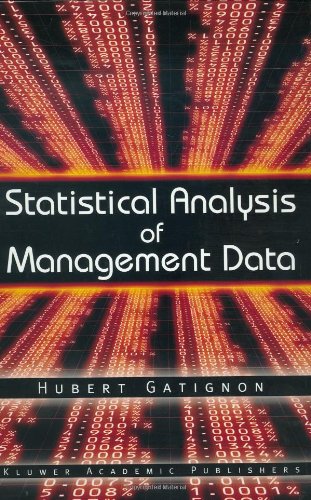James Bradfield0195310632, 9780195310634, 9781429491174
Table of contents :
Contents……Page 12
Part I: Introduction……Page 20
1.3 Three Kinds of Trade-Offs……Page 22
1.4 Mutually Beneficial Intertemporal Exchanges……Page 24
1.5 Economic Efficiency and Mutually Beneficial Exchanges……Page 27
1.6 Examples of Market Failures……Page 30
1.8 The Plan of the Book……Page 33
Notes……Page 35
2.1 Financial Securities……Page 38
2.3 Liquidity……Page 45
2.4 The Problem of Asymmetric Information……Page 48
2.5 The Problem of Agency……Page 55
2.6 Financial Markets and Informational Efficiency……Page 57
Problems……Page 60
Notes……Page 61
Part II: Intertemporal Allocation by Consumers and Firms When Future Payments Are Certain……Page 64
3.2 A Primitive Economy with No Trading……Page 66
3.3 A Primitive Economy with Trading, but with No Markets……Page 70
3.4 The Assumption That Future Payments Are Known with Certainty Today……Page 76
3.5 Abstracting from Firms……Page 77
3.6 The Distinction between Income and Wealth……Page 78
3.7 Income, Wealth, and Present Values……Page 79
Problems……Page 85
Notes……Page 86
4.1 The Intertemporal Budget Line……Page 88
4.2 Intertemporal Indifference Curves……Page 94
4.3 Allocating Wealth to Maximize Intertemporal Utility……Page 99
4.4 Mutually Beneficial Exchanges……Page 101
4.5 The Efficient Level of Investment……Page 104
4.6 The Importance of Informational Efficiency in the Prices of Financial Securities……Page 110
Notes……Page 111
5.1 The Plan of the Chapter……Page 112
5.2 A Firm with Many Shareholders……Page 113
5.3 A Profitable Investment Project……Page 119
5.4 Financing the New Project……Page 121
5.5 Conclusion……Page 127
Problems……Page 128
Notes……Page 129
6.1 A Brief Review and the Plan of the Chapter……Page 130
6.2 Risk and Risk Aversion……Page 131
6.3 A Synopsis of Modern Portfolio Theory……Page 132
6.4 A Model of a Firm Whose Future Earnings Are Uncertain: Two Adjacent Farms……Page 137
6.5 Mutually Beneficial Exchanges: A Contractual Claim and a Residual Claim……Page 139
6.6 The Equilibrium Prices of the Bond and the Stock……Page 141
6.7 Conclusion……Page 143
Problems……Page 144
Notes……Page 145
Part III: Rates of Return as Random Variables……Page 148
7.1 The Objectives of Using Probabilistic Models……Page 150
7.2 Rates of Return and Prices……Page 151
7.3 Rates of Return as Random Variables……Page 155
7.4 Normal Probability Distributions……Page 157
7.5 A Joint Probability Distribution for Two Discrete Random Variables……Page 161
7.7 The Effect of the Price of a Security on the Expected Value of Its Rate of Return……Page 165
7.9 A Linear Model of the Rate of Return……Page 169
7.10 Regression Lines and Characteristic Lines……Page 173
7.11 The Parameter β[sub(i)] as the Quantity of Risk in Security i……Page 176
7.12 Correlation……Page 177
Problems……Page 179
Notes……Page 180
Part IV: Portfolio Theory and Capital Asset Pricing Theory……Page 184
8.1 Introduction……Page 186
8.2 Portfolios as Synthetic Securities……Page 188
8.3 Portfolios Containing Two Risky Securities……Page 189
8.4 The Trade-Off between the Expected Value and the Standard Deviation of the Rate of Return on a Portfolio That Contains Two Securities……Page 191
8.5 A Simple Numerical Example to Show the Effect of ρ[sub(AB)] on the Trade-Off between Expected Return and Standard Deviation……Page 201
8.6 The Special Cases of Perfect Positive and Perfect Negative Correlation……Page 208
8.8 Summary……Page 217
Problems……Page 218
Notes……Page 219
9.1 Introduction……Page 220
9.2 Capital Market Theory and Portfolio Theory……Page 224
9.3 The Microeconomic Foundations of the CAPM……Page 225
9.4 The Three Equations of the CAPM……Page 226
9.5 A Summary of the Intuitive Introduction to the CAPM……Page 233
9.6 The Derivation of the Capital Market Line……Page 234
9.7 The Derivation of the Security Market Line……Page 240
9.8 Interpreting β[sup(i)] as the Marginal Effect of Security i on the Total Risk in the Investor’s Portfolio……Page 248
9.9 Summary……Page 249
Notes……Page 251
10.1 Introduction……Page 254
10.2 Analogies and an Important Distinction between the Capital Asset Pricing Model and Multifactor Models……Page 255
10.3 A Hypothetical Two-Factor Asset Pricing Model……Page 256
10.4 The Three-Factor Model of Fama and French……Page 260
10.5 The Five-Factor Model of Fama and French……Page 264
10.6 The Arbitrage Pricing Theory……Page 265
Appendix: Estimating the Values of β and λ for a Two-Factor Model……Page 268
Problem……Page 270
Notes……Page 271
Part V: The Informational and Allocative Efficiency of Financial Markets: The Concepts……Page 274
11.1 Introduction……Page 276
11.2 Informational Efficiency, Rationality, and the Joint Hypothesis……Page 280
11.3 A Simple Example of Informational Efficiency……Page 284
11.4 A Second Example of Informational Efficiency: Predictability of Returns—Bubbles or Rational Variations of Expected Returns?……Page 290
11.5 Informational Efficiency and the Predictability of Returns……Page 293
11.6 Informational Efficiency and the Speed of Adjustment of Prices to Public Information……Page 295
11.7 Informational Efficiency and the Speed of Adjustment of Prices to Private Information……Page 296
11.8 Information Trading, Liquidity Trading, and the Cost of Capital for a Firm……Page 298
11.9 Distinguishing among Equilibrium, Stability, and Volatility……Page 303
11.10 Conclusion……Page 305
Appendix: The Effect of a Unit Tax in a Competitive Industry……Page 306
Notes……Page 308
12.2 Risk-Adjusted Residuals and the Adjustment of Prices to New Information……Page 314
12.3 The Structure of an Event Study……Page 316
12.5 Example 1: The Effect of Antitrust Action against Microsoft……Page 319
12.6 Example 2: Regulatory Rents in the Motor Carrier Industry……Page 321
12.7 Example 3: Merger Announcements and Insider Trading……Page 323
12.8 Example 4: Sudden Changes in Australian Native Property Rights……Page 324
12.9 Example 5: Gradual Incorporation of Information about Proposed Reforms of Health Care into the Prices of Pharmaceutical Stocks……Page 326
Notes……Page 327
Part VI: The Informational and Allocative Efficiency of Financial Markets: Applications……Page 330
13.1 Introduction……Page 332
13.2 What Is Capital Structure?……Page 333
13.3 The Economic Significance of a Firm’s Capital Structure……Page 335
13.4 Capital Structure and Mutually Beneficial Exchanges between Investors Who Differ in Their Tolerances for Risk……Page 337
13.5 A Problem of Agency: Enforcing Payouts of Free Cash Flows……Page 340
13.6 A Problem of Agency: Reallocating Resources When Consumers’ Preferences Change……Page 342
13.7 A Problem of Agency: Asset Substitution……Page 349
13.8 Economic Inefficiencies Created by Asymmetric Information……Page 355
13.9 The Effect of Capital Structure on the Equilibrium Values of Price and Quantity in a Duopoly……Page 367
13.10 The Effect of Capital Structure on the Firm’s Reputation for the Quality of a Durable Product……Page 368
13.11 Conclusion……Page 370
Appendix……Page 371
Problems……Page 372
Notes……Page 373
14.1 Introduction……Page 376
14.2 The Definition of Insider Trading……Page 377
14.3 Who Owns Inside Information?……Page 378
14.4 The Economic Effect of Insider Trading: A General Treatment……Page 379
14.5 The Effect of Insider Trading on Mitigating Problems of Agency……Page 380
14.6 The Effect of Insider Trading on Protecting the Value of a Firm’s Confidential Information……Page 382
14.7 The Effect of Insider Trading on the Firm’s Cost of Capital through the Effect on Liquidity……Page 387
14.8 The Effect of Insider Trading on the Trade-Off between Insiders and Informed Investors in Producing Informative Prices……Page 391
14.9 Implications for the Regulation of Insider Trading……Page 392
Notes……Page 393
15.1 Introduction……Page 396
15.2 Call Options……Page 397
15.4 A Simple Model of the Equilibrium Price of a Call Option……Page 400
15.5 The Black-Scholes Option Pricing Formula……Page 410
15.6 The Put-Call Parity……Page 413
15.7 Homemade Options……Page 416
15.8 Introduction to Implicit Options……Page 418
15.9 Implicit Options in a Leveraged Firm……Page 419
15.10 An Implicit Option on a Postponable and Irreversible Investment Project……Page 424
Appendix: Continuous Compounding……Page 429
Problems……Page 430
Notes……Page 432
16.1 Introduction……Page 434
16.2 Futures Contracts as Financial Securities……Page 435
16.3 Futures Contracts and the Efficient Allocation of Risk……Page 436
16.4 The Futures Price, the Spot Price, and the Future Price……Page 437
16.5 The Long Side and the Short Side of a Futures Contract……Page 438
16.6 Futures Contracts as Financial Securities……Page 439
16.7 Futures Contracts as Transmitters of Information about the Future Values of Spot Prices……Page 441
16.8 Investment, Speculation, and Hedging……Page 442
16.10 Conclusion……Page 446
Notes……Page 447
17.2 Initial Public Offerings……Page 450
17.4 Behavioral Finance……Page 451
17.6 Financial Derivatives……Page 452
17.7 Corporate Takeovers……Page 453
17.8 Signaling with Dividends……Page 455
17.9 Bibliographies……Page 456
Note……Page 458
18.1 An Overview……Page 460
18.3 Asset Pricing Models……Page 461
18.4 Market Imperfections……Page 462
18.5 Derivatives……Page 464
18.6 Implications for Public Policy……Page 465
Notes……Page 466
Answers to Problems……Page 468
B……Page 480
C……Page 481
E……Page 483
H……Page 484
I……Page 485
M……Page 486
P……Page 487
R……Page 488
Y……Page 489
Z……Page 490
Bibliography of Nobel Laureates……Page 492
Bibliography……Page 496
B……Page 500
C……Page 501
E……Page 502
F……Page 503
I……Page 504
M……Page 505
P……Page 506
S……Page 507
Z……Page 508







Reviews
There are no reviews yet.